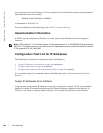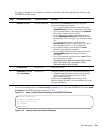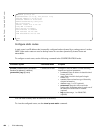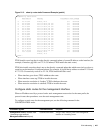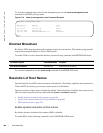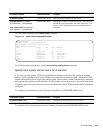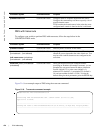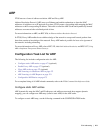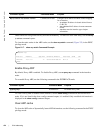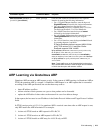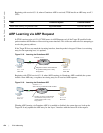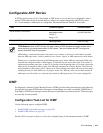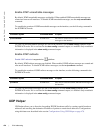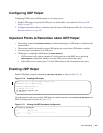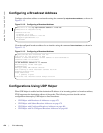IPv4 Addressing | 471
ARP
FTOS uses two forms of address resolution: ARP and Proxy ARP.
Address Resolution Protocol (ARP) runs over Ethernet and enables endstations to learn the MAC
addresses of neighbors on an IP network. Over time, FTOS creates a forwarding table mapping the MAC
addresses to their corresponding IP address. This table is called the ARP Cache and dynamically learned
addresses are removed after a defined period of time.
For more information on ARP, see RFC 826,
An Ethernet Address Resolution Protocol.
In FTOS, Proxy ARP enables hosts with knowledge of the network to accept and forward packets from
hosts that contain no knowledge of the network. Proxy ARP makes it possible for hosts to be ignorant of
the network, including subnetting.
For more information on Proxy ARP, refer to RFC 925,
Multi-LAN Address Resolution, and RFC 1027, Using
ARP to Implement Transparent Subnet Gateways.
Configuration Task List for ARP
The following list includes configuration tasks for ARP:
• Configure static ARP entries on page 471 (optional)
• Enable Proxy ARP on page 472 (optional)
• Clear ARP cache on page 472 (optional)
• ARP Learning via Gratuitous ARP on page 473
• ARP Learning via ARP Request on page 474
• Configurable ARP Retries on page 475
For a complete listing of all ARP-related commands, refer to the
FTOS Command Line Reference Guide.
Configure static ARP entries
ARP dynamically maps the MAC and IP addresses, and while most network host support dynamic
mapping, you can configure an ARP entry (called a static ARP) for the ARP cache.
To configure a static ARP entry, use the following command in the CONFIGURATION mode:




